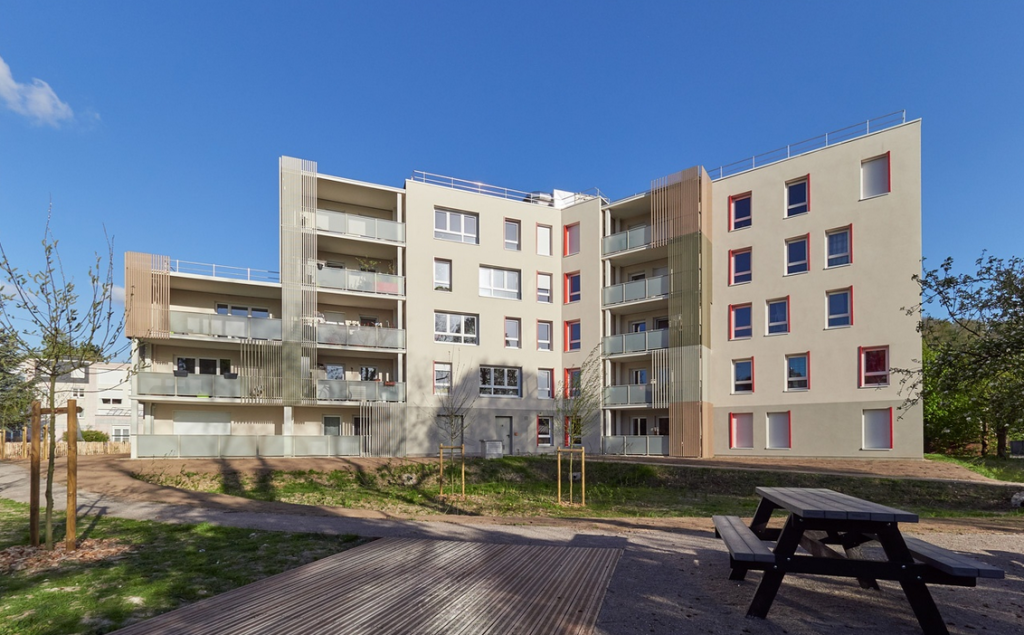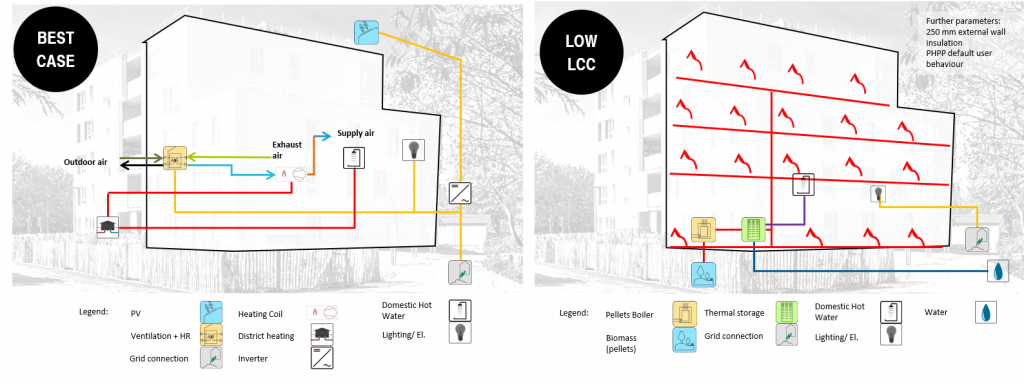
Optimal technology sets

The project CRAVEzero mainly builds on twelve case studies provided by the project partners. The case studies are located in Austria, Italy, France, Germany and Sweden. For several case studies, parametric simulations have been conducted. From the results, the variants with the highest and lowest net present value (NPV) as well as the highest and lowest CO2 emissions were identified. For these variants, similarities and main differences were assessed to identify drivers for realizing cost optimal nZEBs.
The analysis of the variants with the highest and lowest NPV as well as the ones with the highest and lowest CO2 emissions based on the parametric analysis conducted in WP06 shows that non-technical factors have a strong influence on the energy demand, emissions and NPV of a building. These are (amongst others) the user behaviour and climate conditions. Furthermore, a building envelope at least having a nZEB standard – in many cases even a higher standard – is an important component of low emission and low-cost buildings. In these buildings, DHW is in most cases dominating the final energy demand. An interesting finding of analyzing the variants with the lowest NPV and lowest emissions is that in most cases these variants have less technical installations than the base cases and can be considered as low tech buildings. Minimizing the technical installations is, on the one hand, reducing the investment as well as operation and maintenance cost and on the other hand minimizes the auxiliary energy demand. Furthermore, the active use of solar energy (mainly PV, in several cases, also solar thermal) is essential for achieving minimal CO2 emissions. Solar technologies are often competitive with other technologies and especially in the case of PV, which has positive effects on the costs/ NPV. From the analysis, possible best solutions achieving low emissions with comparably low costs were identified. As an example, possible best variants of the case study Résidence Alizari are shown in the Table below.
The analyses of the passive approaches and also of the results of the parametric analysis show that there is no one optimal solution for every setting and side conditions. Furthermore, the goal (minimal costs, minimal emissions) of a design team/ building owner is strongly influencing the technology set and building concept.
Table : Variants with low CO2 emissions and comparably low costs of the case study Résidence Alizari based on parametric simulations. The shown variable number is based on the results matrix of the parametric analysis and is equivalent to the number of the variant in the interactive case study dashboard in the CRAVEzero-pinboard.
| Variant Number | 12098 | 12099 | 11907 | 12162 | 12163 |
| Envelope insulation | External wall 250 mm | External wall 250 mm | External wall 250 mm | External wall 300 mm | External wall 300 mm |
| PV | 30 kWp; efficiency 15 % | 34 kWp; efficiency 17 % | 34 kWp; efficiency 17 % | 30 kWp; efficiency 15 % | 34 kWp; efficiency 17 % |
| NPV [€/m²] | 1,512 | 1,516 | 1,517 | 1,518 | 1,521 |
| CO2 emissions [kgCO2/(m²a)] | 23.31 | 23.14 | 23.61 | 23.22 | 23.05 |


